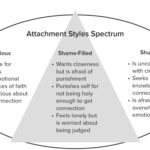Temptation has always played a central role in Even’s temptation use in literature shaping characters, influencing narratives, and driving conflicts. One of the most iconic instances of temptation in storytelling is found in the biblical story of Eve in the Garden of Eden, where she succumbs to the serpent’s persuasion. This tale has inspired countless literary works, forming the foundation for many stories exploring human weakness, moral dilemmas, and the struggle between good and evil.
we will explore Eve’s temptation as used in literature, analyzing how this motif has been reinterpreted across different genres, time periods, and cultures. Specifically, we will examine the symbolic significance of temptation, its recurring themes, and, moreover, the profound impact it has on character development and plot progression.
The Symbolism of Even’s Temptation in Literature
The Book of Genesis establishes the foundation for the story of Eve’s temptation, where the serpent deceives Eve into eating the forbidden fruit. As a result, this act of disobedience leads to the fall of humankind, symbolizing knowledge, sin, and the loss of innocence. Consequently, writers throughout history have drawn upon this biblical reference to explore themes of temptation, guilt, redemption, and the consequences of human choices.
In literature, Even’s temptation use is often depicted in three key symbolic ways:
- The Forbidden Knowledge – Characters, like Eve, are tempted by the promise of greater knowledge or power, leading to dire consequences.
- The Loss of Innocence – Just as Eve’s decision led to exile from Eden, characters often experience a fall from grace after giving in to temptation.
- Moral and Ethical Dilemmas – Authors use Eve’s temptation to examine the complexity of human choices, particularly the struggle between desire and duty.
Classic Examples of Even’s Temptation Use in Literature
-
Paradise Lost by John Milton
John Milton’s Paradise Lost is one of the most famous literary works exploring the theme of Eve’s temptation in literature. In this epic poem, the author vividly depicts Eve’s fall by highlighting her internal conflict and Satan’s persuasive tactics. Furthermore, Milton’s portrayal of Eve emphasizes the dangers of curiosity and ambition, thereby reinforcing the moral consequences of temptation
-
Doctor Faustus by Christopher Marlowe
In Doctor Faustus, the promise of limitless knowledge and power tempts the protagonist, Dr. Faustus, much like it tempts Eve. Similarly, he makes a pact with the devil, sacrificing his soul in exchange for worldly pleasures. As a result, this story mirrors Eve’s temptation, as Faustus’ downfall ultimately stems from his inability to resist the lure of forbidden knowledge.
-
The Picture of Dorian Gray by Oscar Wilde
Oscar Wilde’s The Picture of Dorian Gray presents a modern interpretation of Eve’s temptation as used in literature. Similarly, much like Eve, Dorian succumbs to the promise of eternal youth and beauty; consequently, this leads to his moral corruption. Moreover, his descent into hedonism and eventual downfall strongly echo the themes of temptation and consequence found in Eve’s story.
-
Macbeth by William Shakespeare
Shakespeare’s Macbeth is another powerful example of how Even’s temptation use in literature influences characters and plot development. Lady Macbeth, much like the serpent, tempts her husband into committing regicide by appealing to his ambition. This manipulation leads to Macbeth’s ultimate ruin, demonstrating how temptation can result in self-destruction.
The Psychological Impact of Temptation in Literature
Authors use the theme of temptation to delve into the psychology of their characters. The allure of forbidden desires, whether it be power, knowledge, or material pleasures, creates internal struggles that make characters more complex and relatable. Literature commonly explores the following psychological elements in Even’s temptation use:
- Cognitive Dissonance – Characters experience conflict between their moral beliefs and their desires.
- Guilt and Remorse – The aftermath of temptation often leads to regret, shaping character arcs.
- Redemption and Transformation – Some characters seek redemption after succumbing to temptation, adding depth to the narrative.
How Modern Literature Adapts Even’s Temptation
Contemporary literature continues to draw inspiration from Eve’s temptation, adapting it to fit modern contexts. Themes of temptation appear in dystopian novels, psychological thrillers, and even science fiction. Books such as The Handmaid’s Tale by Margaret Atwood explore how temptation and rebellion against authority shape individual destinies. Similarly, in The Hunger Games by Suzanne Collins, the characters face moral dilemmas that test their integrity and resilience.
All about Even’s temptation use in literature
The theme of Even’s temptation use in literature remains timeless, offering a rich source of inspiration for writers across centuries. Whether presented through biblical allegories, tragic heroes, or modern protagonists, temptation continues to be a driving force in storytelling. By examining how temptation influences character development and moral themes. We gain a deeper understanding of human nature and the consequences of our choices.
In literature, as in life, the battle between desire and righteousness is a universal struggle. By making Eve’s temptation a powerful and enduring motif.

